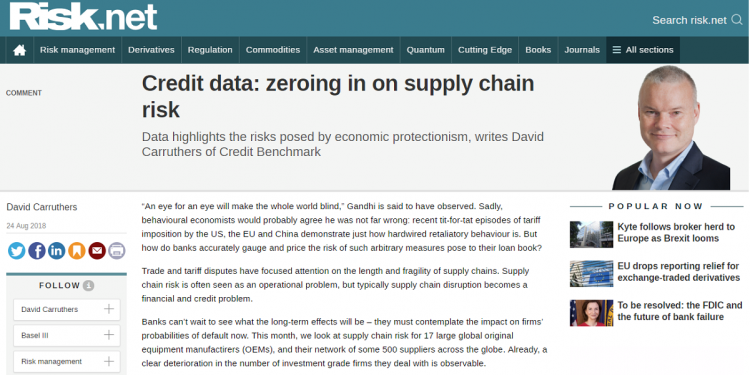
“An eye for an eye will make the whole world blind,” Gandhi is said to have observed. Sadly, behavioural economists would probably agree he was not far wrong: recent tit-for-tat episodes of tariff imposition by the US, the EU and China demonstrate just how hardwired retaliatory behaviour is. But how do banks accurately gauge and price the risk of such arbitrary measures pose to their loan book?
Trade and tariff disputes have focused attention on the length and fragility of supply chains. Supply chain risk is often seen as an operational problem, but typically supply chain disruption becomes a financial and credit problem.
In this series of monthly articles from Risk.net, David Carruthers, head of research at Credit Benchmark, looks at supply chain risk for 17 large global original equipment manufacturers (OEMs), and their network of some 500 suppliers across the globe. Also covered this month are credit trends for UK corporates, the regional differences in credit ratings raised in Basel 2017, and the distribution of senior unsecured loss given default estimates.
Read the full article using the below link or in the September edition of Risk Magazine.